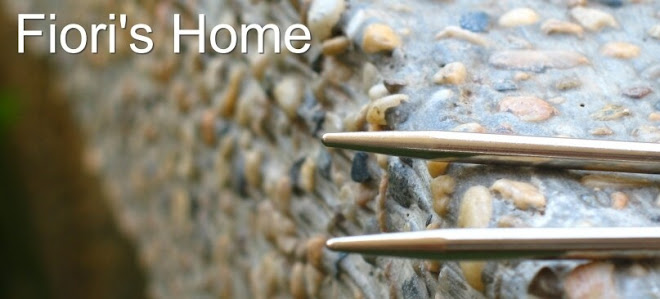Buttons
 The right button can make or break a sweater or jacket, but choosing the right one can sometimes be more difficult than you might think. Here are some hints for finding the perfect button that will enhance your garment rather than detract from it (or worse, cause an unexpected "wardrobe malfunction").
The right button can make or break a sweater or jacket, but choosing the right one can sometimes be more difficult than you might think. Here are some hints for finding the perfect button that will enhance your garment rather than detract from it (or worse, cause an unexpected "wardrobe malfunction").
Try to purchase your buttons before making the button bands. That way, you can pick the button without fear that the buttonhole will be too large or too small. Once the buttons are chosen, you can make the buttonhole to fit the button.
Take along your gauge swatch when button shopping. If you have time, try stitching a small buttonhole band onto the swatch, using a couple of different-size buttonholes. At the store, you'll be able to try the buttons on your buttonholes to see how they look on your garment and which ones work best.
Decide whether your garment needs buttons that stand out as part of the overall design, or whether they should be unobtrusive. You may want to match the yarn color, or you may find that a great-looking contrasting color gives the best appearance.
Scale is important. Tiny buttons belong on garments made with fine yarns, and large buttons look better on garments made with heavy yarns.
Shank buttons generally work better on thick fabrics; they are easier to apply and provide good stability.
To sew on buttons, use sewing or embroidery thread in a matching color. A button can be stabilized to prevent wobbling, drooping or pulling through the crocheted fabric by adding a small "stay" button on the wrong side of the fabric. The designer button on the right side of the fabric and the stay button on the wrong side are sewn on at the same time in one operation.
Choose a stay button that is flat and at least as large as the designer button. Use a button with two holes for a designer button with two holes or a shank. Use a 4-hole stay button with a 4-hole designer button.
Mix button styles on one garment. You can create some fun, unique looks, and it's a great way to use some of those lovely one-of-a kind buttons in your grandmother's button box!
If you are using buttons that are non-washable or require special cleaning, fasten them onto the garment with button pins. These special safety pins have a curve to accommodate the button and allow easy removal of the button for cleaning.
Make your own buttons. You can purchase a button-covering kit and cover them with matching fabric, or use Fimo or Sculpy modeling clay to make eye-catching, machine-washable buttons. You can also crochet simple buttons to complement your garment.
It's easy to get even spacing for an odd number of buttonholes. Place pins at point where top and bottom holes will be. Fold piece in half so that pins are together. Place a third pin at center and unfold. Fold again so that center pin and top pin are together. Place a fourth pin at this fold, unfold. Fold again so that center pin and bottom pin are together. Place a fifth pin at this fold, unfold. If necessary, continue to split the difference between the pins until the desired number of holes is marked.
Here is a final tip: Sloppy, loose buttonholes look amateurish and don't stay fastened very well. Remember that most yarns stretch slightly with use over time, so your new buttonholes should fit snuggly over your buttons.
Try applying these tips and techniques when using buttons on your garments to ensure successful results. Buttons really can make or break the finished look!
+resize1.jpg)
+resize.jpg)

0 comments:
Post a Comment